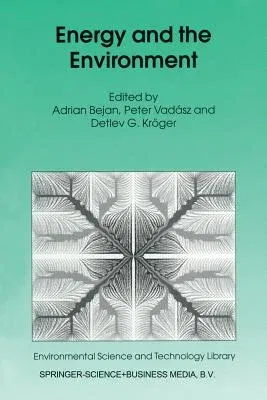This book describes the state of the art at the interface between energy
and environmental research. The contributing authors are some of the
world leaders in research and education on energy and environmental
topics. The coverage is worth noting for its breadth and depth. The book
begins with the latest trends in applied thermodynamics: the methods of
exergy analysis, entropy generation minimization and thermoeconomics. It
continues with the most modern developments in energy processing and
conservation techniques: heat transfer augmentation devices, inverse
thermal design, combustion and heat exchangers for environmental
systems. The environmental impact of energy systems is documented in a
diversity of applications such as the flow of hazardous waste through
cracks and porous media, thermally induced flows through coastal waters
near power plants, and lake ecology in the vicinity of pumped storage
systems. The book outlines new research directions such as the
manufacturing of novel materials from solid waste, advances in radiative
transport, the measurement of convective heat transfer in gas turbines
and environmentally acceptable refrigerants.
The book is rich in engineering design data that make a concrete
statement on topics of world wide interest, e.g., toxic emissions, the
depletion of energy resources, global environmental change (global
warming), and future trends in the power generation industries.
Written by leaders in research and education, this book is an excellent
text or supplement for undergraduate and graduate courses on energy
engineering and environmental science.


